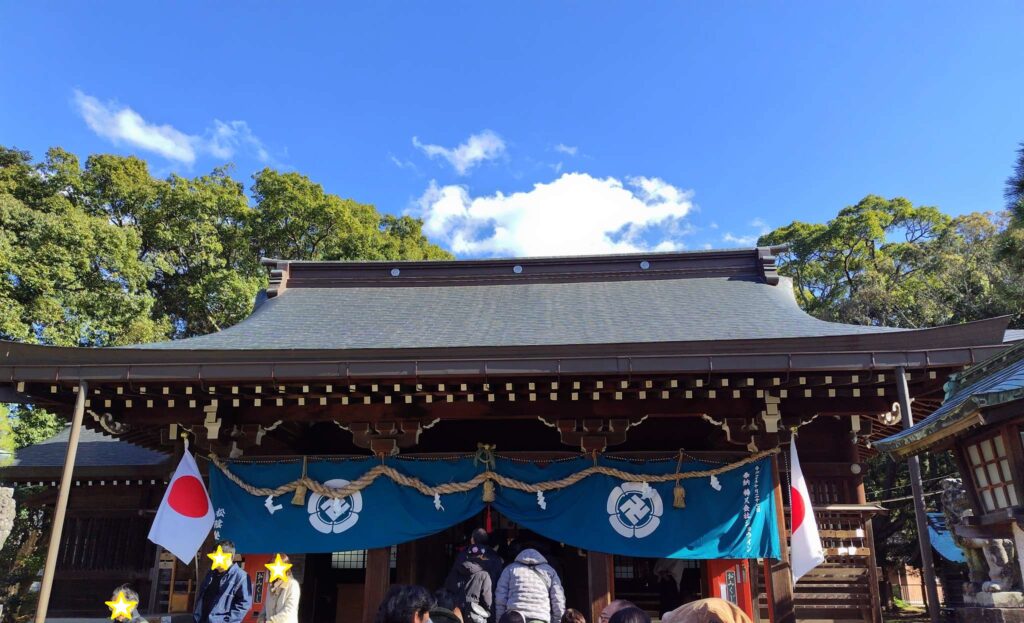Visiting Shokasonjuku Academy on New Year’s Day
On New Year’s Day 2025, I visited Shoin Shrine and Shokasonjuku Academy in Hagi City, Yamaguchi Prefecture, Japan.
This picture below shows Shoin Shrine. We had to wait in line for about 20 minutes for our first shrine visit of the year.

The shrine houses Shokasonjuku, an academy that operated about 170 years ago and produced numerous influential leaders in Japan. It was inscribed as a UNESCO World Heritage Site in 2015. If you are a fan of world heritage sites or interested in education, this is a highly recommended place to visit.
The Historical Significance of Shoka Sonjuku
Shokasonjuku Academy was registered as a World Heritage Site as part of the “Sites of Japan’s Meiji Industrial Revolution,” along with several other locations.
The academy’s teacher was a man named Yoshida Shoin. Although he taught at Shokasonjuku for only a little over a year, he nurtured many individuals who would go on to transform Japan, including Japan’s first Prime Minister, Ito Hirobumi.
This photo shows the lecture hall of Shokasonjuku.

Here’s a close-up of the interior. The person depicted in the artwork and the statue is Yoshida Shoin himself.

Yoshida Shoin’s Legacy as an Educator
As someone who works at a cram school, I’ve always been interested in Shokasonjuku Academy.
Although I didn’t take pictures, the Shoin Memorial Museum nearby recreates scenes of the lectures conducted at the academy.
The lessons seemed to go something like this:
Student: “Teacher, I have a poor memory and can’t retain what I read after just one reading. What should I do?”
Shoin: “That’s actually a good thing. Books are not meant to be read just once. By reading them over and over, their content will truly become part of you.”
*In Japan, it is common to address teachers simply as “sensei” without mentioning their names. When a name is added, it is usually to distinguish them from other teachers.
This was the opening of the recreation. Unlike modern Japanese schools that primarily use group lessons, Shokasonjuku Academy focused on a style where Shoin would teach based on the specific questions and needs of his students.
Shoin nurtured many great individuals, but he met a tragic end at the age of 30. He was executed for criticizing the Tokugawa Shogunate, which held power at the time, and for plotting the assassination of influential shogunate figures.
While “assassination plot” sounds alarming, Shoin was deeply concerned about the shogunate’s weakening authority. He believed that Japan could not rely on the Tokugawa Shogunate to ensure the country’s future and that a new Japan needed to be built.
The End of the Edo Shogunate
The large-scale execution of critics like Shoin by the Tokugawa Shogunate is known as the Ansei Purge. This occurred in 1859. However, this event only fueled further criticism of the shogunate, which ultimately fell eight years later in 1867.
Japan then transitioned from the Edo Period to the Meiji Period—a time when many foundational systems of modern Japan were established.
Shoin’s disciples carried on his vision and took on key roles in the Meiji government, driving the transformation of Japan.
This is just one chapter of Japan’s rich history.
Lessons from Yoshida Shoin
Finally, I’d like to share one of my favorite quotes from Yoshida Shoin:
「知は行の本たり 行は知の実たり」
Its meaning is:
“Knowledge is the foundation of action, and action is the fruit of knowledge.”
In today’s world, where information is just a search away, I remind myself that simply having knowledge is meaningless—it must be put into action to truly have value.
Coming Next: Exploring a Showa-Era School
In my next article, A Journey to Shokasonjuku Academy Part 2, I’ll introduce a site in Hagi City that depicts the life of schools in Japan during the Showa Era (1926–1989).

Pingback: A Journey to Shokasonjuku Academy(Part 2) - japanhubs.com